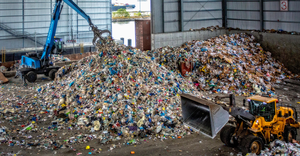Regulation Shift
New EPA chief may have small industry impact.
The waste and recycling industry is reacting to President Barack Obama’s nomination of Gina McCarthy to lead the U.S. Environmental Protection Agency (EPA). What the nomination means for the industry is still uncertain, but it’s not likely to have a big impact, says one long-time industry official.
President Obama nominated McCarthy, currently assistant administrator of the EPA’s Office of Air and Radiation, on March 8, submitting the nomination to the Senate for comfirmation. If she is confirmed by Congress, McCarthy will replace Lisa Jackson, who announced in late December that she would step down from the position.
President Obama called McCarthy a “straight shooter,” at a press conference announcing the nomination and said, “I’m sure she will do an outstanding job at the EPA.”
Sharon Kneiss, president and CEO of Washington-based Environmental Industry Associations (EIA), said in a statement, “America’s solid waste and recycling industry looks forward to working with the new EPA administrator after she is confirmed. Our industry is a vital part of America’s environmental infrastructure, collecting and managing wastes, recyclables and compostables and producing energy from wastes. The companies that we represent have been revolutionizing the way that wastes and recyclables are collected, processed and ultimately disposed. We look forward to partnering with government when appropriate to continue our efforts to increase recovery of recycled and compostable materials, increase the amount of sustainable energy that we produce, and make our trucks more energy efficient.”
Chaz Miller, state programs director for EIA, worked for the EPA for 11 years from 1976 to 1987 in recycling and waste management. What will McCarthy’s appointment mean for the waste and recycling industry? “It’s hard to say,” he says in an interview. “Her time with the agency so far has been on air issues; the closest she came is on various climate change proposals.”
Miller believes more than EPA leadership change, the business should be concerned about government funding. “The bigger issue for industry is what will Congress and the agency do to the EPA budget during this turmoil and sequestration period, and how is that going to impact the various programs related to solid waste and recycling whether it’s the LMOP (EPA’s Landfill Methane Outreach Program) or the other solid waste programs that the agency is offering. I don’t know the answer to that.”
He hopes the new EPA administration will continue to support LMOP, and also that the agency does more on the definition of non-hazardous solid materials. The issue in particular concerns construction and demolition (C&D) wood and whether or not it can be burned as a fuel and whether Clean Air Act regulations have to be imposed.
“The industry has been working with the agency for several years on that issue, and we still haven’t come to a final resolution,” Miller says. “The rule that was released a couple weeks ago certainly says the agency is looking toward a potentially favorable resolution of the C&D wood issue.”
But his priorities for the new administration are simple. “Just retain an open mind and be open toward facts,” he says.
In looking back at Jackson’s tenure Miller says, “You have to remember, there’s not a lot of waste issues with the EPA.” He adds that the industry is frustrated with EPA’s general attitude regarding the rule on non-hazardous solid materials, and continues to take issue with reporting requirements on the greenhouse gas rules.
“But I don’t think there was a hostile or negative relationship by any means,” he says.
Miller expects solid waste and recycling to continue to be a small part of the EPA agenda, particularly since the Resource Conservation and Recovery Act (RCRA), the primary federal law covering solid waste, delegates those issues to state and local government functions.
About the Author(s)
You May Also Like


